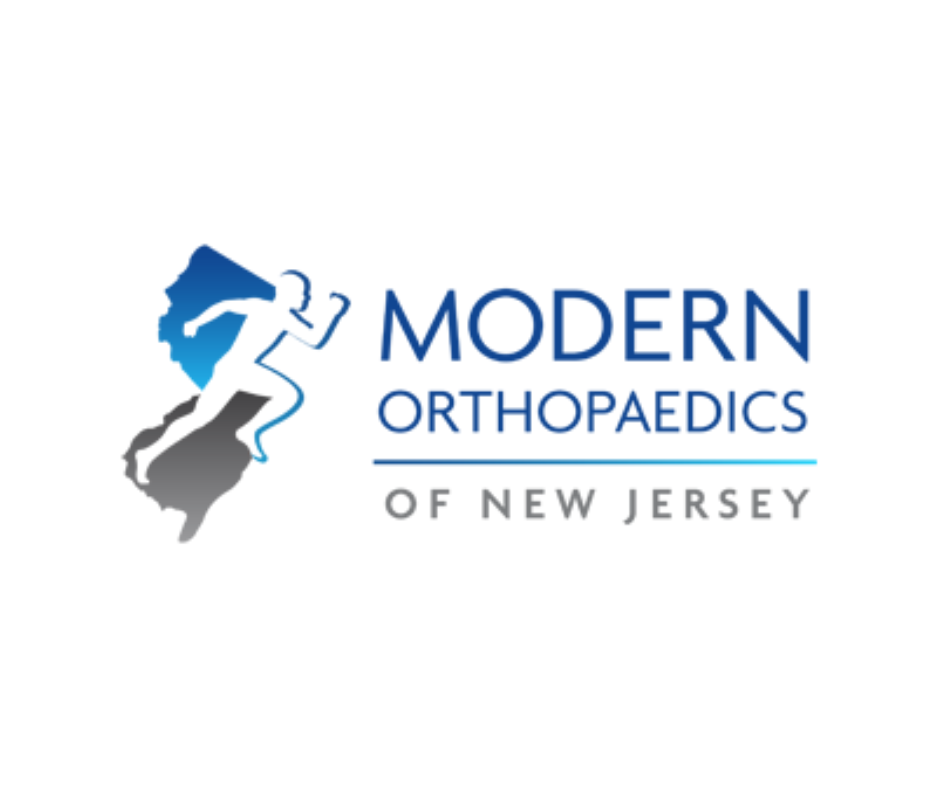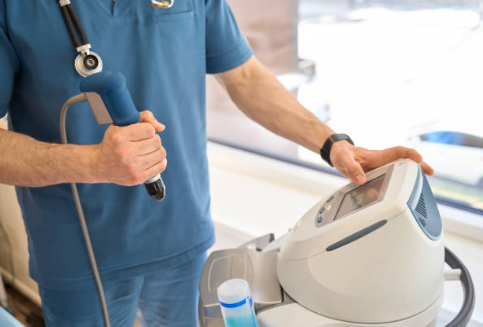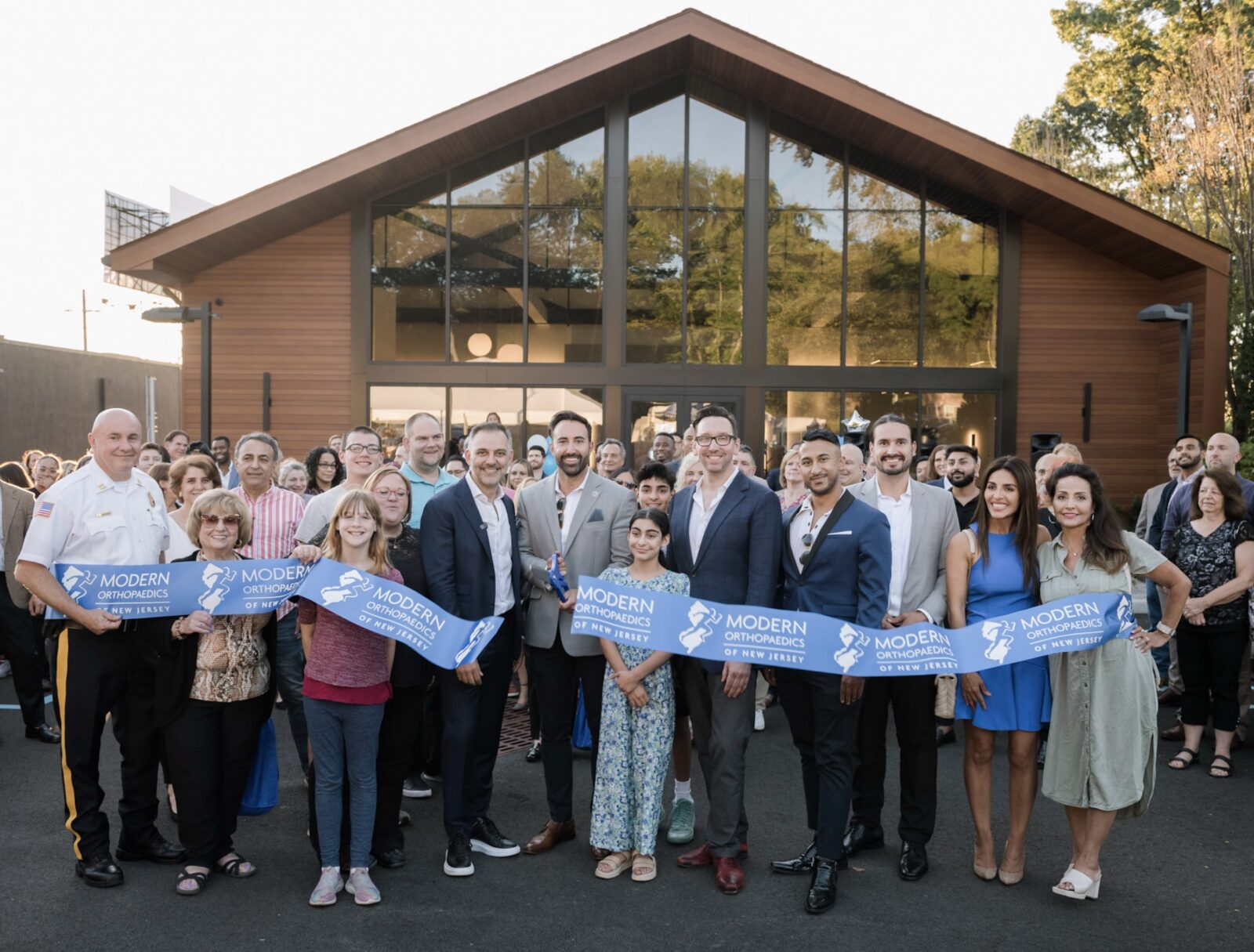PARAMUS, NJ: Do you experience pain when shaking hands, making a fist, or attempting to turn a doorknob? Do pain and stiffness in your elbow, forearm muscles, and/or wrist make it difficult to hold a pen or sleep comfortably through the night? If you answered yes to any of the above, elbow tendonitis could be the underlying cause.
Common forms of elbow tendonitis, such as tennis elbow or golfer’s elbow, are repetitive injury syndromes that can have a major impact on your ability to perform daily tasks and activities, do your job, or engage in your favorite athletic and recreational activities. While elbow tendonitis often improves with at-home treatment methods, chronic pain and inflammation that are severe or don’t resolve over time should always be evaluated by a medical professional.
If you are living with chronic elbow pain that is affecting your comfort, mobility, and quality of life, the highly trained and experienced elbow specialists at Modern Orthopaedics of New Jersey can help. Read on to learn more about the causes and symptoms of chronic elbow tendonitis, treatment options for the condition, and how to know when to seek medical attention.
Contact us today to schedule an initial consultation and take the first step toward a complete and lasting recovery!
Understanding Chronic Elbow Tendonitis
Elbow tendonitis is a condition characterized by inflammation of one or more tendons around the elbow joint. Often caused by repetitive strain over time, it is common in athletes who play sports that involve repetitive arm movements (racket sports, baseball, golf) as well as individuals whose jobs require repeated motions of the elbow, wrist, and forearm (painters, plumbers, etc.).
The term chronic elbow tendonitis describes elbow tendonitis that persists over a long period of time. If symptoms have been ongoing for three months or more, the condition is usually considered to be chronic.
Definitions And Causes
The two most common forms of elbow tendonitis our team treats at Modern Orthopaedics of New Jersey are tennis elbow and golfer’s elbow:
Tennis Elbow
Lateral epicondylitis (commonly referred to as tennis elbow) is the most prevalent form of chronic elbow tendonitis. Between 1-10% of the population will develop tennis elbow at some point in their lifetime.
Tennis elbow primarily affects the extensor carpi radialis brevis (ERCB) tendon but can also impact other tendons that help attach the forearm muscles to the lateral side of the elbow joint (the side of the elbow furthest away from the center of the body if you are standing with your arms at your sides and your palms are facing forward). Its symptoms include pain and stiffness on the outside of the elbow that worsen with twisting or bending movements, such as turning a doorknob or swinging the arm. Pain may also radiate into the forearm and/or wrist.
Golfer’s Elbow
Medial epicondylitis (commonly referred to as golfer’s elbow) is less prevalent than tennis elbow. It is estimated that less than 1% of the population will experience this condition during their lifetime.
Golfer’s elbow affects the tendons that originate on the medial side of the elbow (the side of the elbow closest to the center of the body if you are standing with your arms at your sides and your palms are facing forward). These tendons are responsible for motions such as flexing the fingers and turning the palms upwards (supination), which is why symptoms of the condition may include decreased grip strength and difficulty forming a fist. As with tennis elbow, pain caused by golfer’s elbow may radiate up and down the arm.
Elbow tendonitis is caused by repetitive strain and/or a significant amount of force on the elbow tendons that leads to the development of micro-tears in the tissue over time. Common triggers of elbow tendonitis include overuse of the elbow muscles, repeated motions involving the elbow joint, and a lack of proper technique during movements and activities that put stress on the elbow tendons.
Athletes who play the following sports may be at increased risk of developing elbow tendonitis:
- Tennis, squash, pickleball, and other racket sports
- Baseball/softball
- Bowling
- Climbing sports
- Weight lifting
People who work in professions that involve repetitive wrist and elbow movements may also be at increased risk of developing the condition. This includes:
- Painters
- Plumbers
- Mechanics
- Carpenters
- Assembly line workers
- Office workers
While people of any age, gender, and background may develop elbow tendonitis, the following factors may increase the risk of developing the condition:
- Being over the age of 40
- Regularly lifting more than 45 lbs.
- Smoking
- Having diabetes
- Living with obesity
- Performing repetitive movements that involve the wrist/elbow for more than one hour per day
Symptoms And Diagnosis
Elbow tendonitis is generally diagnosed through asking the patient about the nature and history of their symptoms as well as performing an in-depth physical examination. In some cases, imaging tests such as X-ray, ultrasound, CT, or MRI scans may be ordered to better visualize the affected area and rule out other potential injuries or conditions.
Every case of chronic elbow tendonitis is unique, but common symptoms of the condition include:
- Pain and stiffness near the elbow joint that may radiate into the forearm, wrist, and/or upper arm
- Ongoing inflammation and tenderness in the elbow region
- Decreased grip strength
Symptoms of tennis elbow may specifically include:
- Pain on the outside of the elbow that worsens with twisting or bending movements
Symptoms of golfer’s elbow may specifically include:
- Pain on the inside of the elbow
- Numbness/tingling in the hand or fingers
When To Seek Medical Attention
Not all cases of elbow tendonitis require medical attention, but if symptoms are severe, worsening, or affecting your ability to perform routine tasks or engage in activities you love, having your elbow evaluated by a medical professional is strongly advised. Chronic tendonitis or golfer’s elbow can last months or years without treatment and medical advice or intervention can significantly reduce that timeframe.
Not sure whether or not to book an appointment to treat tennis elbow or golfer’s elbow? Here are three reasons that indicate you shouldn’t wait:
Persistent Or Worsening Pain
Pain that is severe, persists even with rest and at-home treatments, and/or is worsening over time should always be evaluated by a medical professional.
Functional Limitations
You are unable to comfortably perform the movements necessary for work duties, recreational activities, or everyday tasks and responsibilities.
Signs Of Severe Injury
You are experiencing symptoms of a severe elbow injury, including:
- Inability to move the elbow joint
- Severe elbow pain
- Significant swelling/bruising
- Numbness/tingling in the hand or fingers
- Unusual angle of the elbow joint
Treatment Options
The recommended treatment approach for chronic elbow tendonitis is determined by the type, scope, and severity of the condition. At Modern Orthopaedics of New Jersey, every treatment plan is tailored to the specific needs and treatment goals of the patient.
Conservative Treatments
Conservative, non-surgical treatment options for chronic elbow tendonitis may include:
- Rest
- Ice and elevation
- Activity modification
- Bracing and/or splinting
- Physical therapy
- Over-the-counter pain relievers/anti-inflammatory medications
Interventional Procedures
Non-invasive or minimally-invasive medical treatment options for chronic elbow tendonitis may include:
- Steroid injections
- Platelet-rich plasma injections
- Ultrasonic tenotomy (TENEX) treatment
- Shockwave therapy
Surgical Options
Surgery may be indicated in severe cases of chronic elbow tendonitis that have been unresponsive to more conservative treatment approaches. At Modern Orthopaedics of New Jersey, our award-winning elbow specialists will work closely with you to develop a surgical plan that reflects the specifics of your case.
Prevention And Maintenance
It may not always be possible to prevent chronic elbow tendonitis, but the measures below can help reduce the likelihood of developing the condition:
- Warm up properly before engaging in activities that put strain on the elbow joints
- Give the body time to recuperate after intense or repetitive movements involving the elbow joints
- Wear protective gear as recommended
- Wear a brace or splint as recommended
- Actively stretch and strengthen the forearm muscles
Ergonomic Adjustments
Ergonomic optimization of your workspace and/or home can help to significantly reduce strain, wear, and tear associated with repetitive arm movements. For computer work, this may include keeping your monitor screen at eye level, feet flat on the floor, and elbows bent at a 90-degree angle when typing.
Strengthening And Stretching Exercises
A physical therapist can evaluate your elbow tendonitis and recommend specific stretches and exercises to improve flexibility, strength, and range of motion in the elbow/wrist.
Conclusion
To conclude, chronic elbow tendonitis is a condition characterized by inflammation in the elbow tendons. Symptoms can range from mild to severe and should be evaluated by a medical professional if they are impacting your comfort, mobility, or quality of life.
To learn more about elbow tendonitis and receive a treatment plan tailored to your needs and treatment goals, contact the world-class team of elbow specialists at Modern Orthopaedics of New Jersey today. We look forward to working with you!






